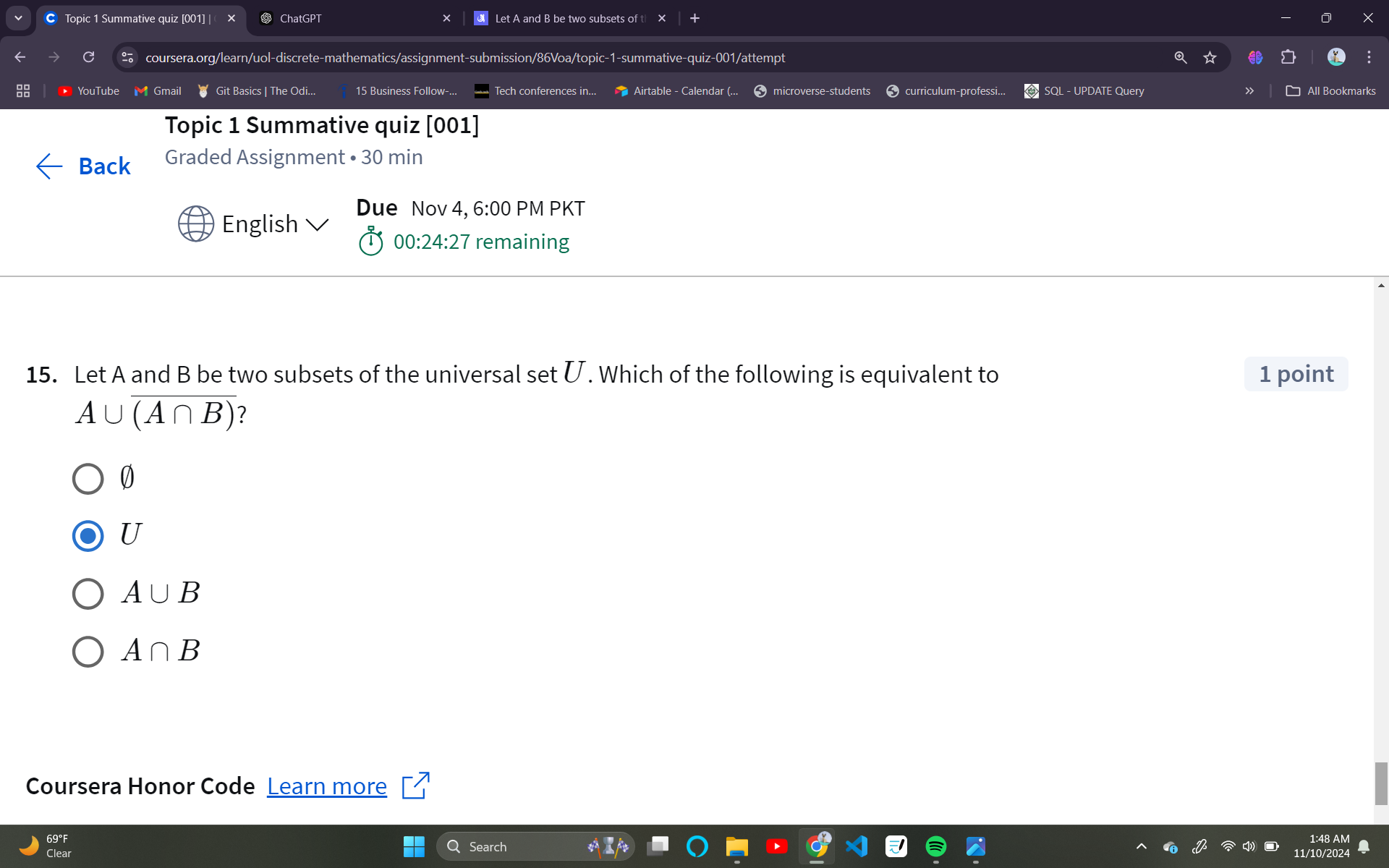Let A and B be two subsets of the universal set U. Which of the following is equivalent to A ∪ (A ∩ B)?

Understand the Problem
The question is asking which of the given options is equivalent to the expression A ∪ (A ∩ B), where A and B are subsets of a universal set U. It requires understanding of set operations such as union and intersection.
Answer
The expression \( A \cup (A \cap B) \) is equivalent to \( U \).
Answer for screen readers
The expression ( A \cup (A \cap B) ) is equivalent to the universal set ( U ).
Steps to Solve
-
Simplify the Expression
To simplify the expression ( A \cup (A \cap B) ), we can use the properties of set union and intersection.
-
Understanding Intersection
The term ( A \cap B ) represents all elements that are in both sets ( A ) and ( B ).
-
Using Union with Intersection
The union of ( A ) with ( A \cap B ) will result in a set that includes all elements from ( A ) and any elements from ( A \cap B ). However, since ( A \cap B ) is already part of ( A ), it does not add any new elements. Thus: $$ A \cup (A \cap B) = A $$
-
Consider the Cases
Since ( A ) is included entirely within the universal set ( U ), the expression evaluates to all elements in ( U ).
-
Final Conclusion
Thus, we conclude that ( A \cup (A \cap B) ) covers all elements in the universal set ( U ): $$ A \cup (A \cap B) = U $$
The expression ( A \cup (A \cap B) ) is equivalent to the universal set ( U ).
More Information
In set theory, the union operation combines all elements from the sets, while the intersection operation gives us the shared elements. The inclusion of ( A \cap B ) within ( A ) does not change the overall outcome, confirming that the entire construction is equivalent to ( U ).
Tips
- A common mistake is to overlook that ( A \cap B ) does not introduce any new elements to ( A ) when taking the union.
- Not recognizing that if ( A \subseteq U ), then ( A \cup (A \cap B) ) must also be within ( U ).
AI-generated content may contain errors. Please verify critical information